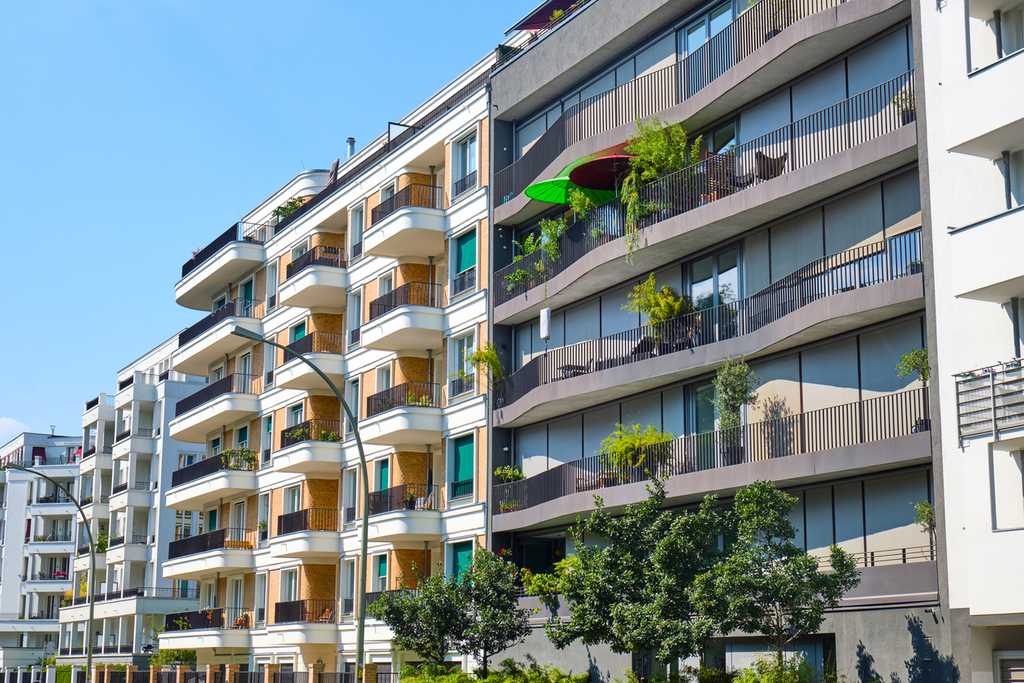Investing in real estate makes financial sense for those who can't handle the volatility of the markets, as well as those who want to diversify into other investments outside of stocks and bonds. Real estate investing is also smart for those who want assets they can see, feel and touch. Investors with experience may even enjoy managing their tenants themselves, as well as updating and renovating their own properties. However, those who don't can always hire contractors to help.
But, what about multi-family properties? These properties can be very diverse, ranging from a two-unit duplex building to a small apartment building with multiple units. This type of real estate investment works similarly to investing into a single family home, yet there are some additional details (and potential hassles) to keep in mind.
Key Takeaways
- Investing in physical real estate is an excellent way to diversify your portfolio, although it's not as "hands off" as investing in the stock market.
- This type of investment has the potential to pay off if you get in at the right time. According to the National Association of Realtors (NAR), the median sales price for residential real estate was up 15.8% year-over-year from December 2020 to December of 2021.
- Multi-family housing units are one type of real estate you can invest in. While there are pros and cons to consider, multi-family real estate comes with the added benefit of multiple units and multiple rents coming in.
- Accredited investors can invest in rental properties through real estate investment trusts (REITs). Accredited and non-accredited investors can invest in a limited capacity in REITs through crowdfunding sites like RealtyMogul .
What is a Multi-family Property?
A multi-family property is exactly what it sounds like it would be — a single property that has multiple units under one roof. Examples of multi-family properties can include:
- Duplexes: This type of property consists of one two-story home with one unit upstairs and another unit downstairs.
- Townhomes: This type of property consists of one house that is separated into two units with an interior wall. Townhomes each have their own entrance.
- Apartment buildings: An apartment building is one large building that holds multiple housing units (usually 5 or more) inside.
- Semi-detached house: This type of property is a single family home that shares a common wall with another single family home.
Generally speaking, multi-family properties with 5 or more units fall within the realm of commercial real estate instead of residential. It's also important to note that investing in residential real estate (instead of commercial property) comes with serious advantages including easier access to financing.
Reasons to Invest in Multi-Family Properties
There are many reasons to invest into real estate, but especially into multi-family properties. Some of the main reasons to consider this investment strategy are outlined below:
Reason #1: Build Cash Flow
The biggest benefit of multi-family properties is the potential for cash flow each investment brings. When you have multiple rents coming in and a single mortgage payment, you can start building up passive income you can use for living expenses or more investments.
As your tenants make their rent payments over time, the principal of your mortgage has the potential to drop dramatically. At that point, you can let your renters pay off your property in its entirety, or you could refinance to get cash out.
Reason #2: Easy Financing
Also be aware that multi-family units can be easy to finance if you have good credit, mainly because lenders are well aware of their cash-producing power. The reality is, a home with multiple units can provide an ongoing source of cash for the investor, which helps provide peace of mind for companies extending financing for the purchase.
In the meantime, multi-family units have a much lower potential for long-term vacancies. While renters will definitely move in and out over time, the fact there are multiple units means cash flow should remain consistent.
Reason #3: Benefits of Living On-Site
If you plan to purchase a multi-family property and live in one of the units, the benefits of this type of property are even greater. You may be able to qualify for a conventional home loan, which can come with lower interest rates and better loan terms. You can even use a FHA home loan for multi-family properties with up to four units. With a FHA home loan, you can qualify for a competitive interest rate, low loan fees and a down payment amount as low as 3.5%.
If you buy a multi-family home and live in one of the units, you have the potential to cover your living costs entirely with rental payments as well. Called "house hacking," this strategy can put you in an excellent position to build wealth through real estate and other means.
Reason #4: Tax Benefits
Finally, it's worth noting that any kind of real estate investing can result in considerable tax benefits. As a landlord, you have the potential to claim an array of deductions for repairs, upgrades, property management fees and more.
Pros and Cons of Investing in Multi-Family Real Estate
Before you invest into real estate — and especially into properties that have more than one unit — it helps to know the potential advantages and disadvantages you'll face.
Pros:
- Build streams of passive income with multiple properties. The main benefit of multi-family properties is the income potential they bring. With multiple rents coming in each month, you can build streams of income that last.
- Financing can be easy to come by. With a [good credit score (/article/what-is-a-good-credit-score) and solid finances, you should have no problem securing a mortgage for a multi-family property.
- Live in one unit and have your renters pay your mortgage. If you have the desire to "house hack," you can live mortgage-free in a multi-family unit.
- Maintenance and repairs can be easier to manage. While you'll have multiple HVAC units and sets of appliances, multi-family units usually have one roof, one common area that requires landscaping, and other shared amenities.
Cons:
- Multi-family properties can be expensive, especially right now. The real estate market is exceptionally pricey right now, and multi-family units are offered at a premium.
- The market is competitive. You'll have to beat out other investors to get your hands on the best multi-family units available right now.
- Being a landlord isn't always fun. Managing tenants, repairs, and complaints isn't for everyone.
- Property management companies cost money. You can hire a property manager to deal with the day-to-day hassles of being a landlord, but this service costs money that will eat away at your profits.
The Bottom Line
Investing in a multi-family property can bring serious benefits, but you should know what you're getting into ahead of time. Make sure to study up on potential financing options, real estate prices in your area, and local rents for various types of units. With some research and planning, you could have your own profitable real estate investment in no time.

